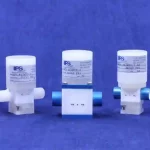The increasing adoption of solar panels as a renewable energy source is a promising step towards a more sustainable future. Solar power offers numerous environmental advantages, such as reduced carbon emissions and decreased reliance on fossil fuels. However, like many technologies, solar panels have a lifecycle that poses sustainability challenges, particularly in terms of manufacturing, disposal, and resource depletion. To address these challenges, the concept of the circular economy has emerged as a solution to close the sustainability loop of solar panels. In this article, we will explore how solar panels fit into the circular economy framework, highlighting the benefits and strategies for achieving a more sustainable solar industry.
The Solar Panel Lifecycle
Before delving into the circular economy approach, it’s essential to understand the solar panel lifecycle and the associated sustainability challenges:
- Raw Material Extraction: The production of solar panels requires raw materials like silicon, metals, and rare earth elements, which are often mined, leading to resource depletion and environmental impacts.
- Manufacturing: The manufacturing process involves energy-intensive procedures, such as the melting and processing of silicon, as well as the use of hazardous chemicals.
- Installation and Use: Solar panels are typically installed on rooftops or ground-mounted systems to capture sunlight and generate electricity. During their operational life, they produce clean and renewable energy.
- End of Life: Solar panels have a lifespan of 25 to 30 years or more. However, at the end of their life cycle, they may become electronic waste, posing disposal challenges and environmental risks.
- Recycling and Disposal: Solar panels contain valuable materials like silicon and metals that can be recycled. However, recycling rates are currently low, and improper disposal can lead to environmental contamination.
The Circular Economy and Solar Panels
The circular economy is an economic and industrial model that aims to minimize waste, promote resource efficiency, and create a closed-loop system where products are designed, manufactured, used, and recycled or reused without generating waste or depleting resources. Applying the principles of the circular economy to the solar panel industry can help address the sustainability challenges at each stage of the lifecycle:
- Design for Sustainability: The circular economy begins with product design. Solar panel manufacturers can design products with sustainability in mind, emphasizing factors like resource efficiency, recyclability, and longevity. This includes selecting materials that are easier to recycle and designing solar panels for easy disassembly and component replacement.
- Resource Efficiency: To reduce the environmental impact of raw material extraction and manufacturing, the solar industry can prioritize resource efficiency by using recycled materials and adopting cleaner production processes. Additionally, the development of thin-film and organic solar panels, which require fewer resources, can contribute to resource efficiency.
- Reuse and Repurposing: Instead of disposing of older solar panels, they can be refurbished and repurposed for other applications. For example, solar panels that no longer meet efficiency standards for electricity generation can be used to power low-energy applications or incorporated into architectural designs.
- Recycling: Recycling is a crucial component of the circular economy. Solar panel manufacturers and recycling facilities can collaborate to develop efficient and cost-effective recycling processes to recover valuable materials, such as silicon, aluminum, and glass, from decommissioned panels. This can reduce the need for virgin materials and minimize waste.
- Extended Producer Responsibility (EPR): Governments and regulatory bodies can implement EPR programs to hold solar panel manufacturers responsible for the end-of-life management of their products. This encourages manufacturers to design products for recyclability and invest in recycling infrastructure.
Benefits of Implementing Circular Economy Principles in the Solar Industry
- Resource Conservation: Applying circular economy principles to the solar industry reduces resource consumption and minimizes the environmental impact of raw material extraction, manufacturing, and disposal.
- Waste Reduction: By designing solar panels for reuse and recycling, less electronic waste is generated, reducing the burden on landfills and the potential for environmental contamination.
- Cost Savings: Recycling materials from decommissioned solar panels can be more cost-effective than mining and refining virgin resources, leading to potential cost savings for manufacturers.
- Energy Efficiency: Recycling and repurposing solar panels reduce the energy required for manufacturing new panels, contributing to overall energy efficiency.
- Market Opportunities: As sustainability becomes a more significant factor in purchasing decisions, solar panel manufacturers that embrace circular economy principles can gain a competitive edge in the market.
- Reduced Carbon Footprint: The circular economy approach helps reduce the carbon footprint associated with the production and disposal of solar panels, aligning with global efforts to mitigate climate change.
Challenges and Considerations
While the circular economy offers substantial benefits for the solar industry, there are challenges and considerations to address in its implementation:
- Technology Advances: The rapid advancement of solar panel technology may lead to shorter product lifespans, posing challenges for circular economy practices. Manufacturers must strike a balance between innovation and sustainability.
- Consumer Awareness: Educating consumers about the importance of recycling and the availability of recycling programs for solar panels is essential to encourage responsible end-of-life management.
- Policy and Regulation: Governments and regulatory bodies must create and enforce policies that incentivize circular economy practices, such as extended producer responsibility programs and recycling targets.
- Collection and Recycling Infrastructure: Building a robust infrastructure for the collection, transportation, and recycling of solar panels is critical to ensuring the success of circular economy initiatives.
- Economic Viability: Recycling processes must be economically viable for manufacturers and recycling facilities to promote widespread adoption.
- Global Collaboration: Given the global nature of the solar industry, international collaboration and standardization of recycling practices are essential to create a seamless circular economy for solar panels.
Conclusion
Solar panels have the potential to play a pivotal role in transitioning to a more sustainable and renewable energy future. To fully realize this potential, it is crucial to integrate circular economy principles into the solar panel industry. By designing for sustainability, promoting resource efficiency, reusing and repurposing older panels, and establishing efficient recycling processes, the solar industry can reduce its environmental impact, conserve resources, and contribute to a more sustainable and closed-loop energy ecosystem. As the demand for clean energy continues to rise, embracing the circular economy is not only an ethical choice but also a strategic one, ensuring a brighter and more sustainable future for generations to come.














